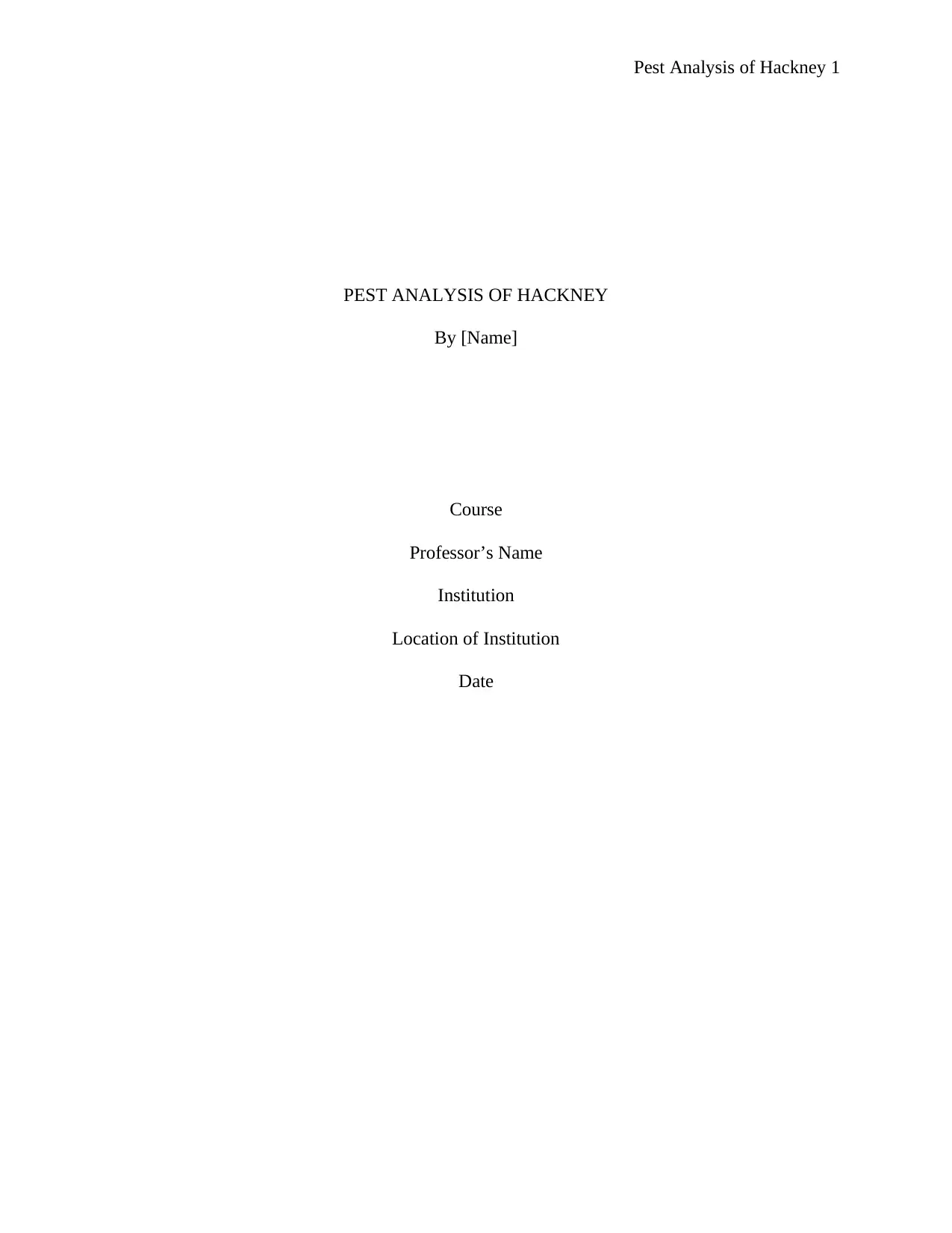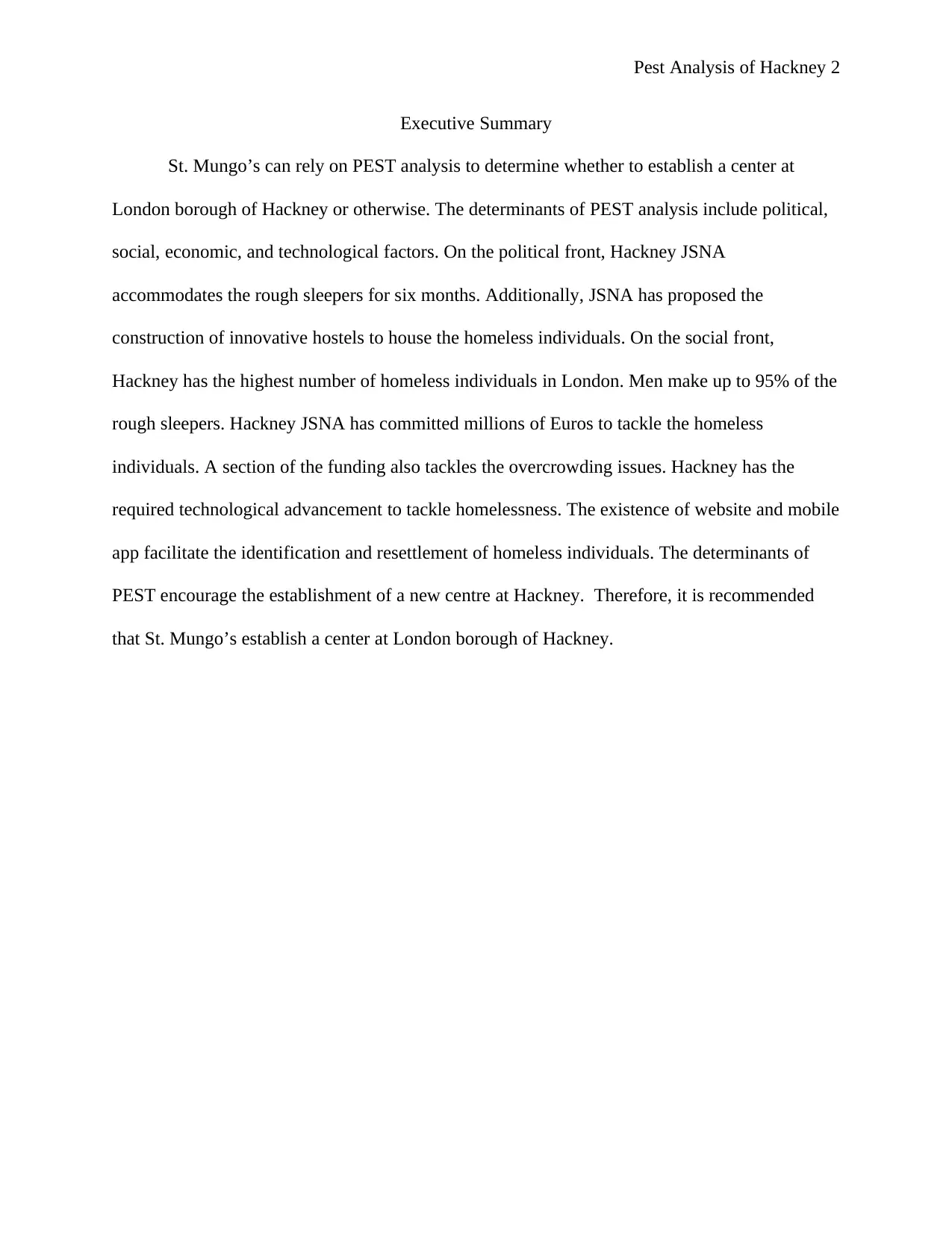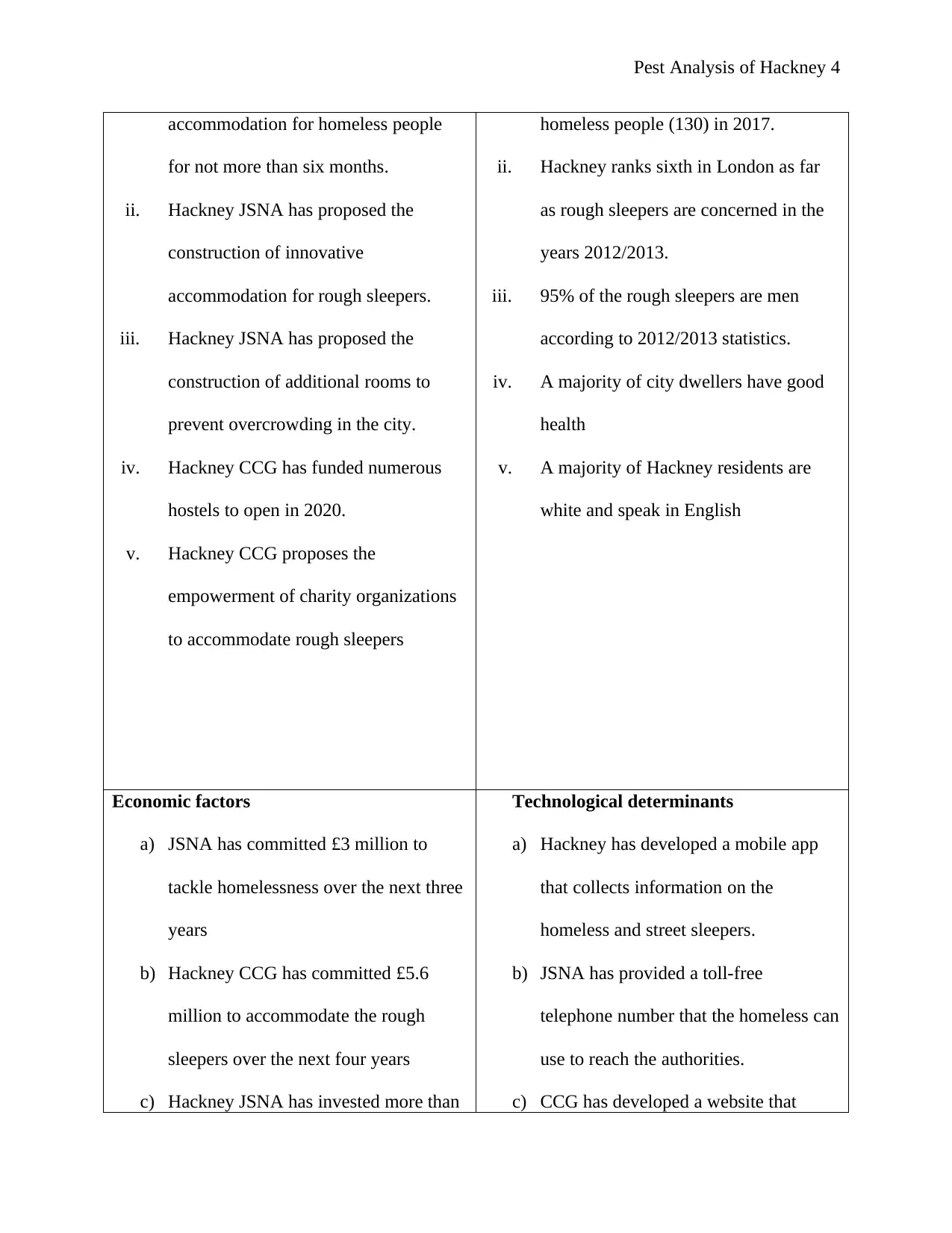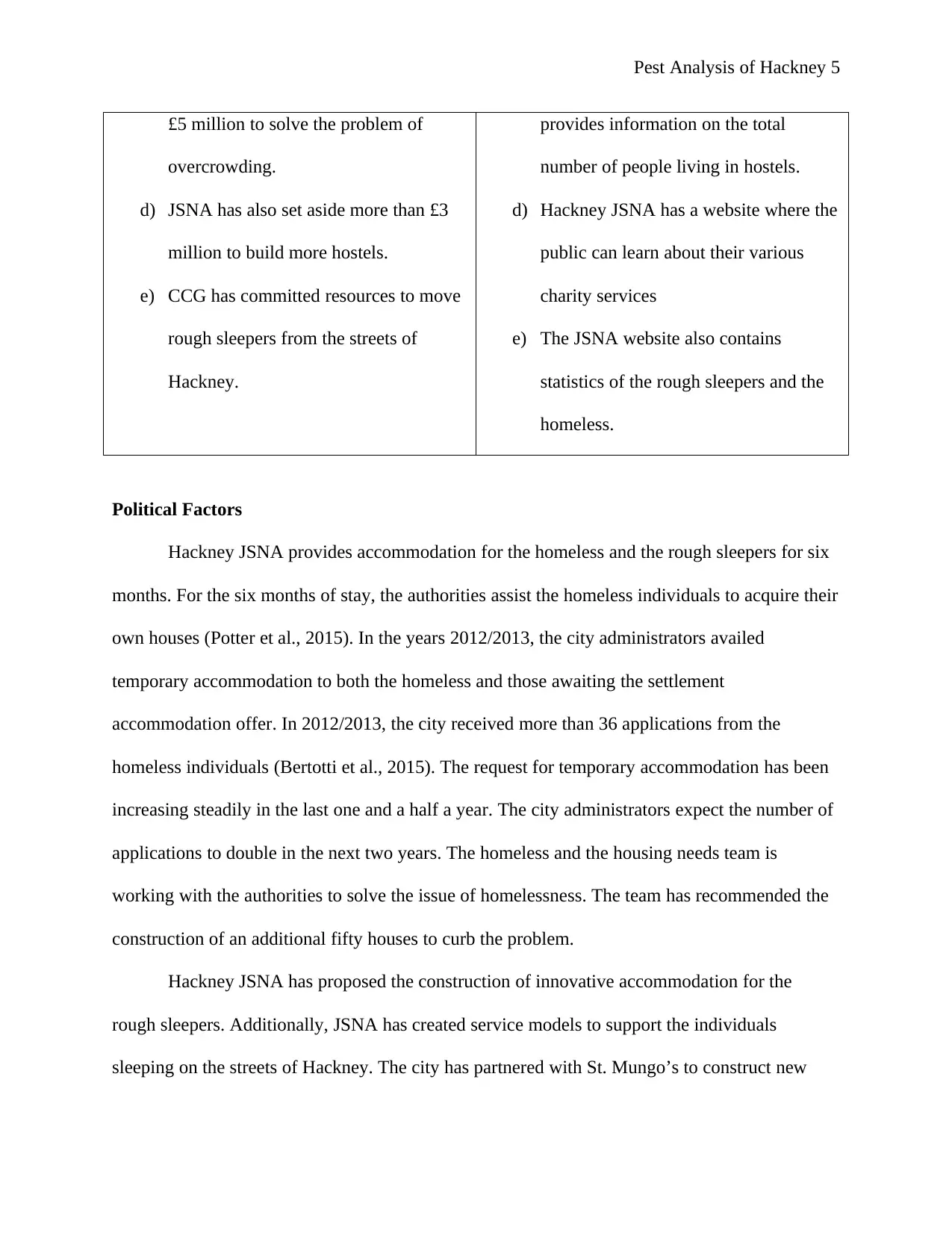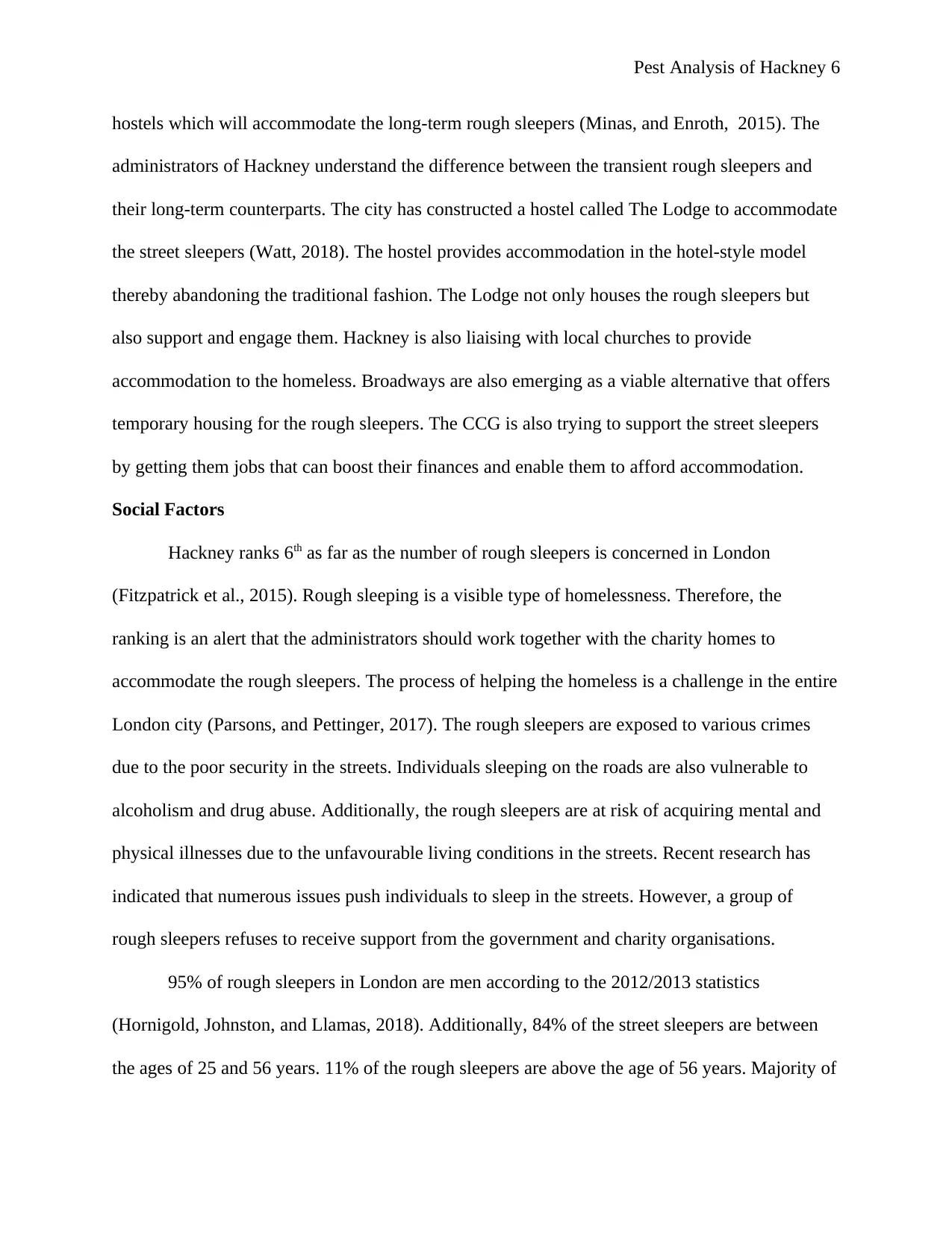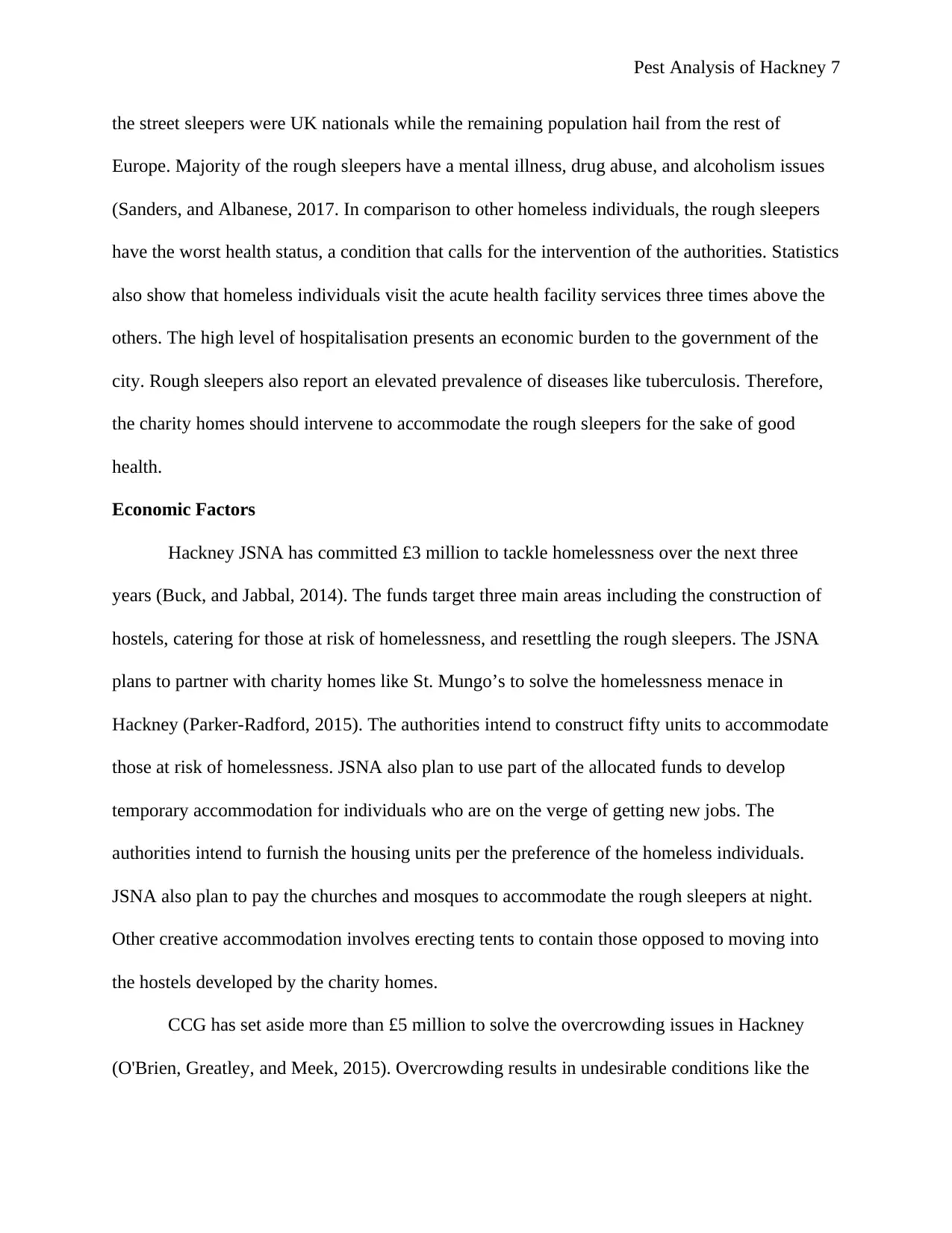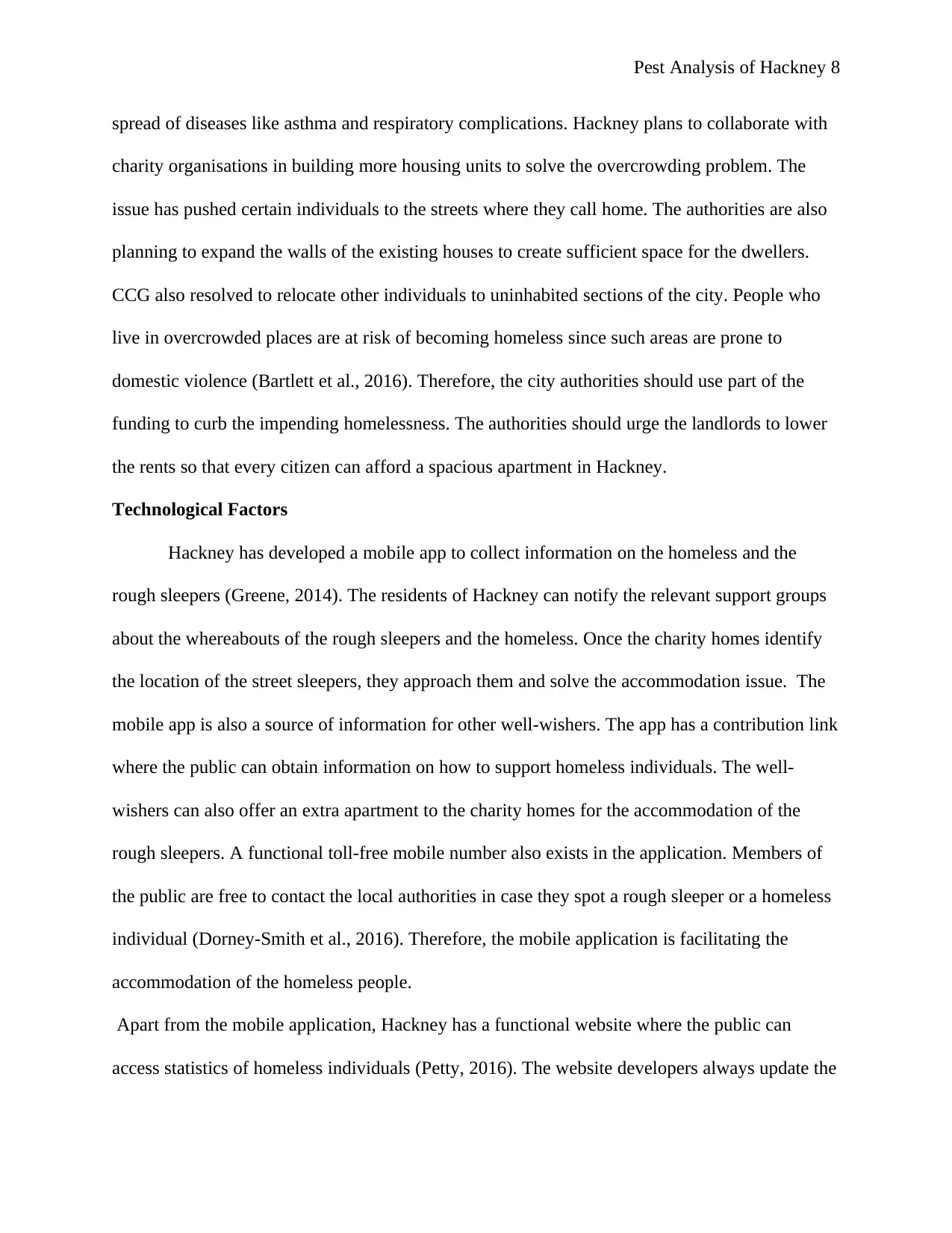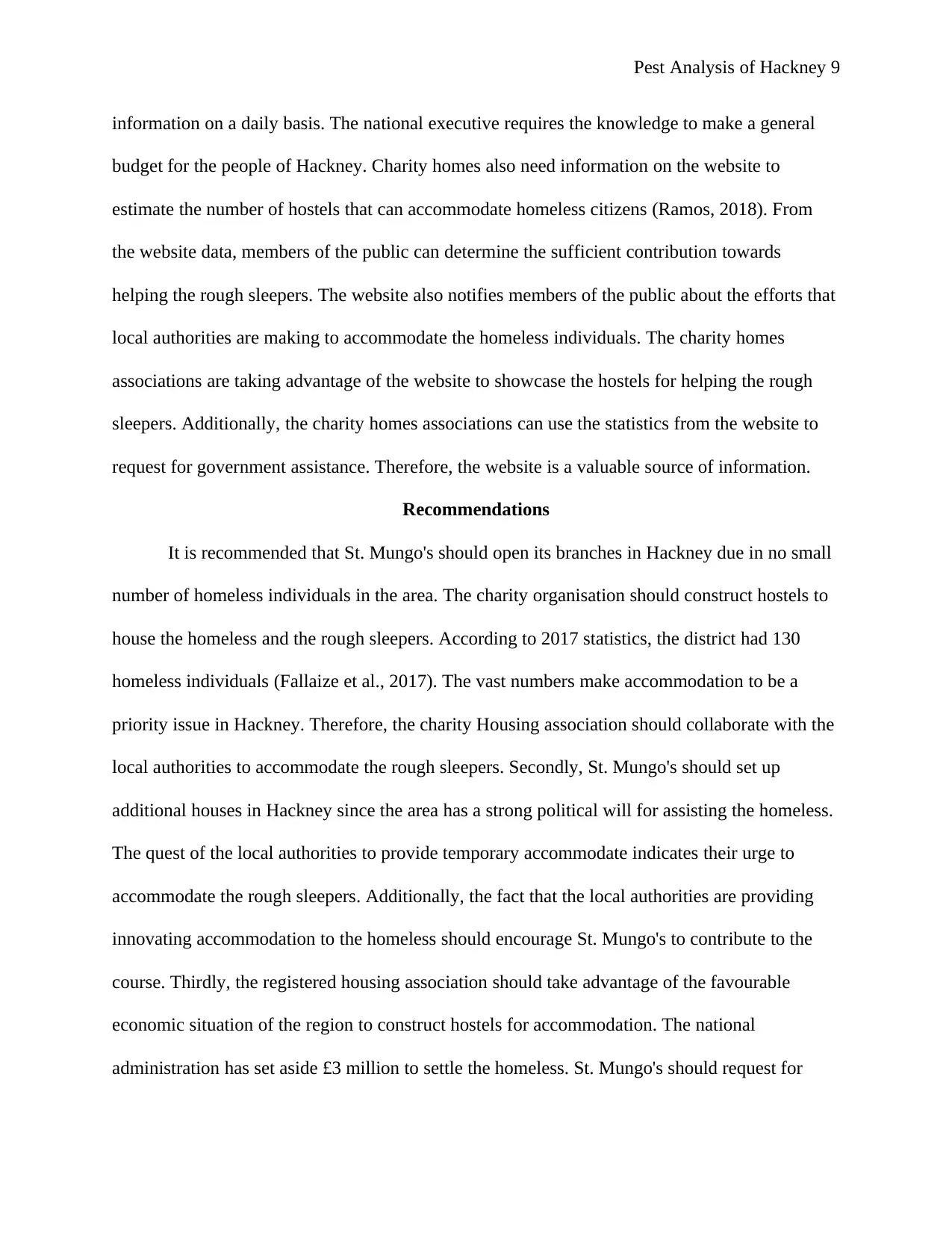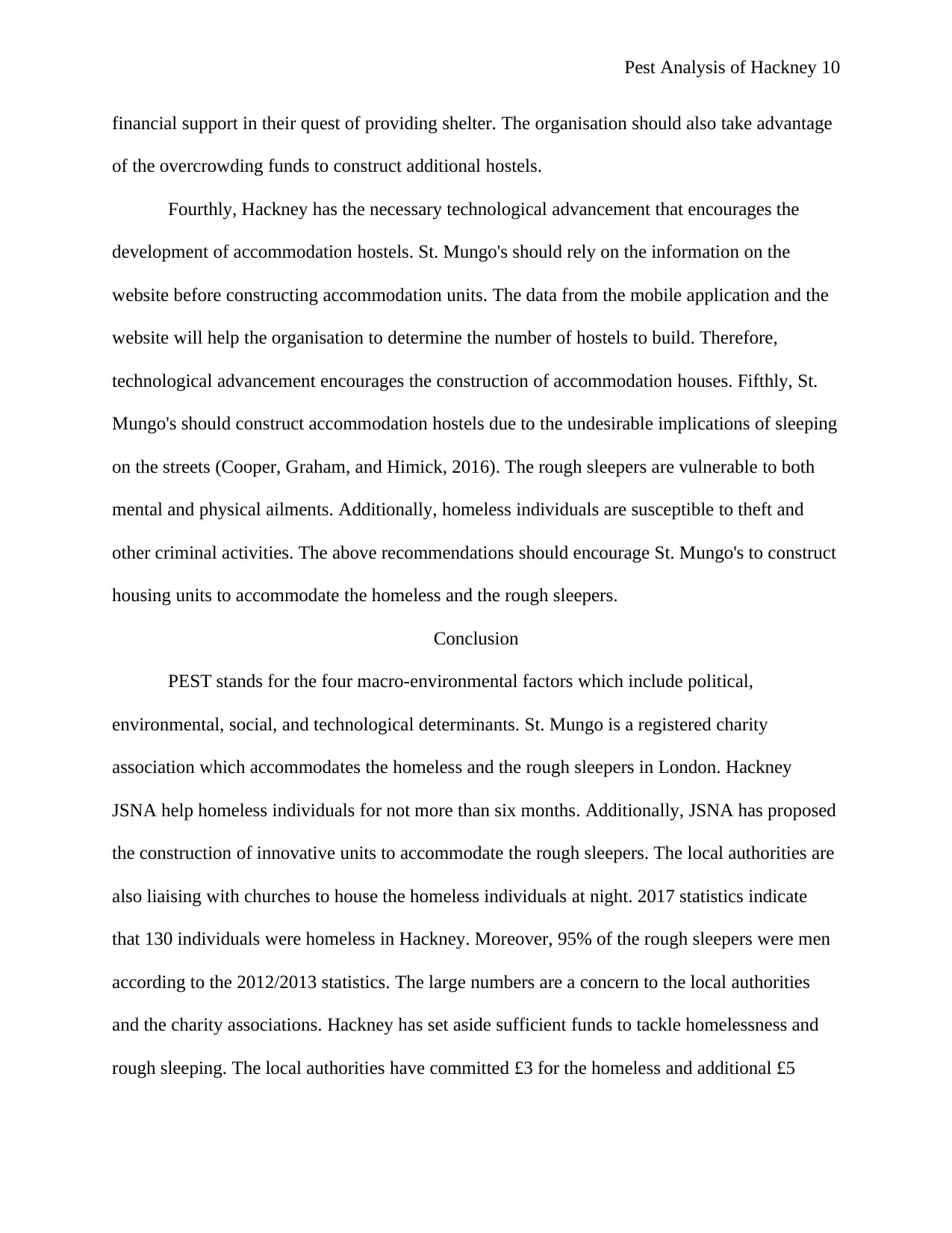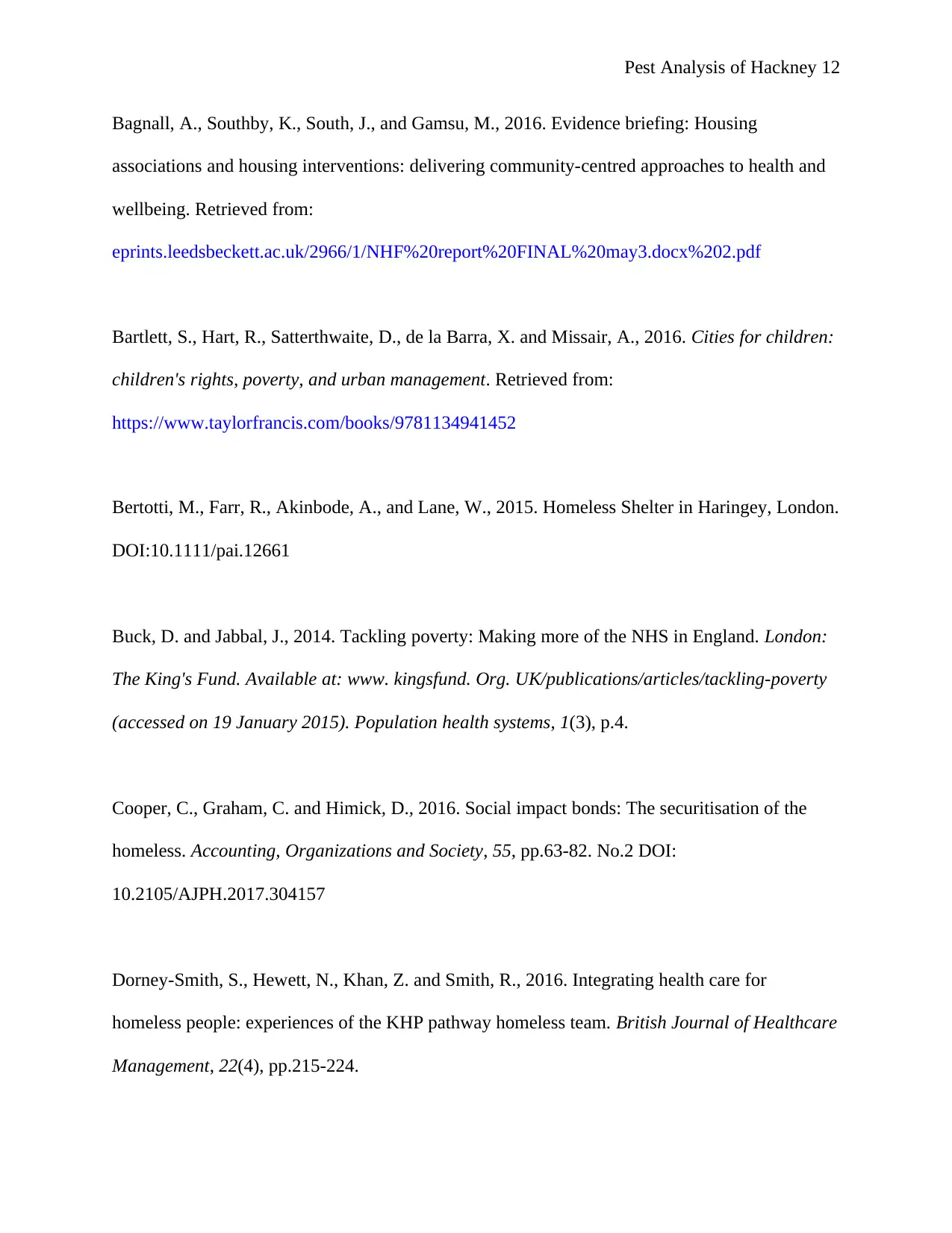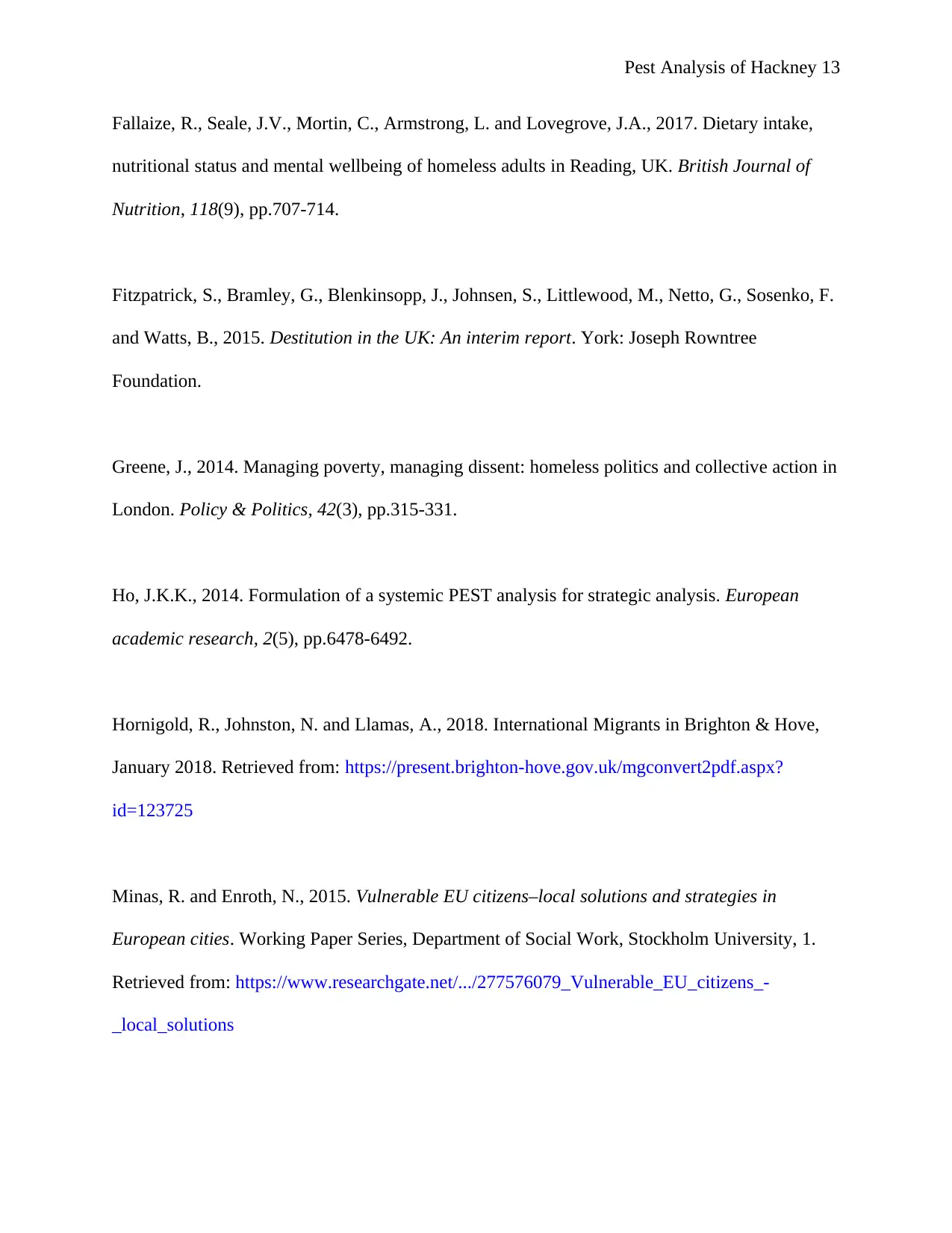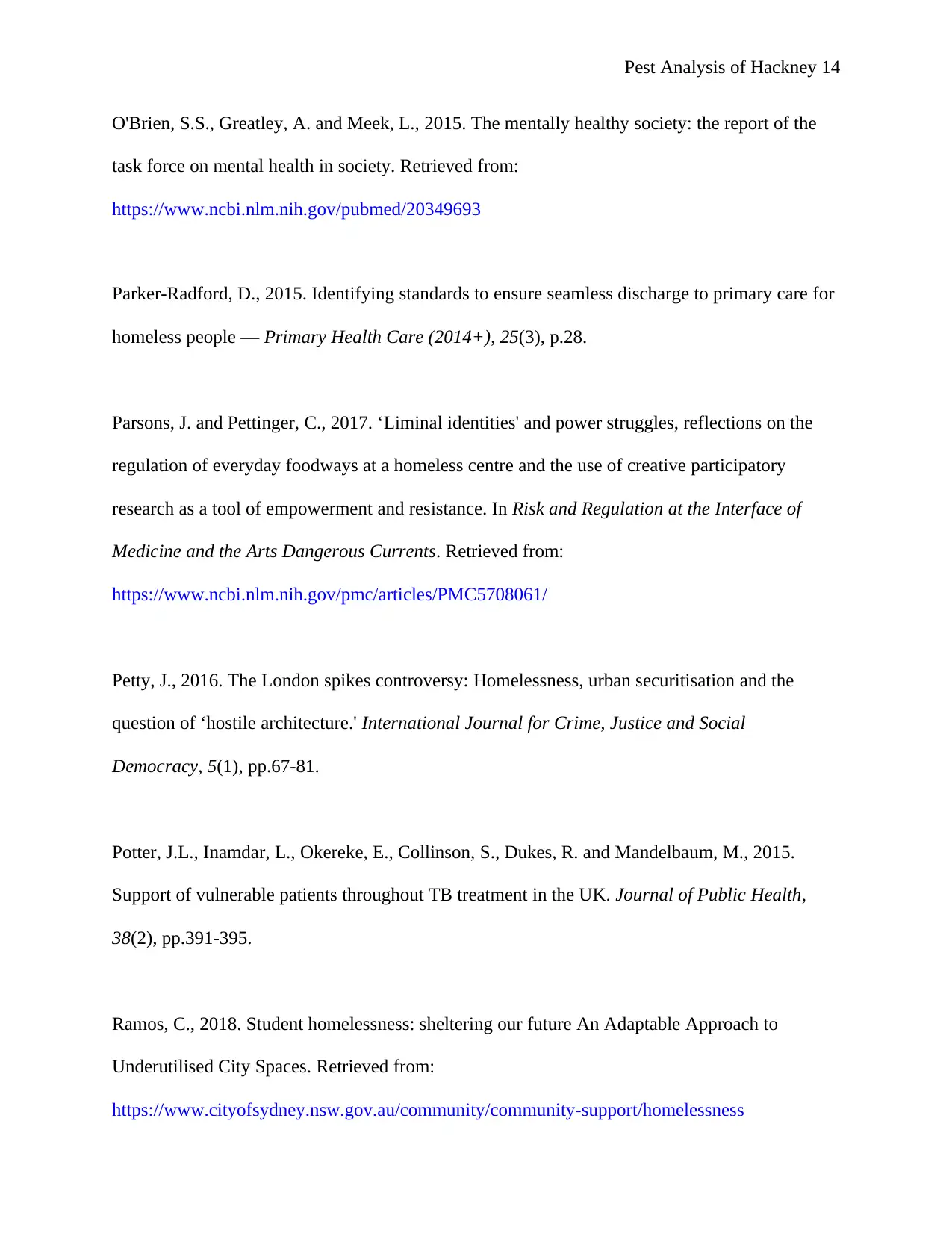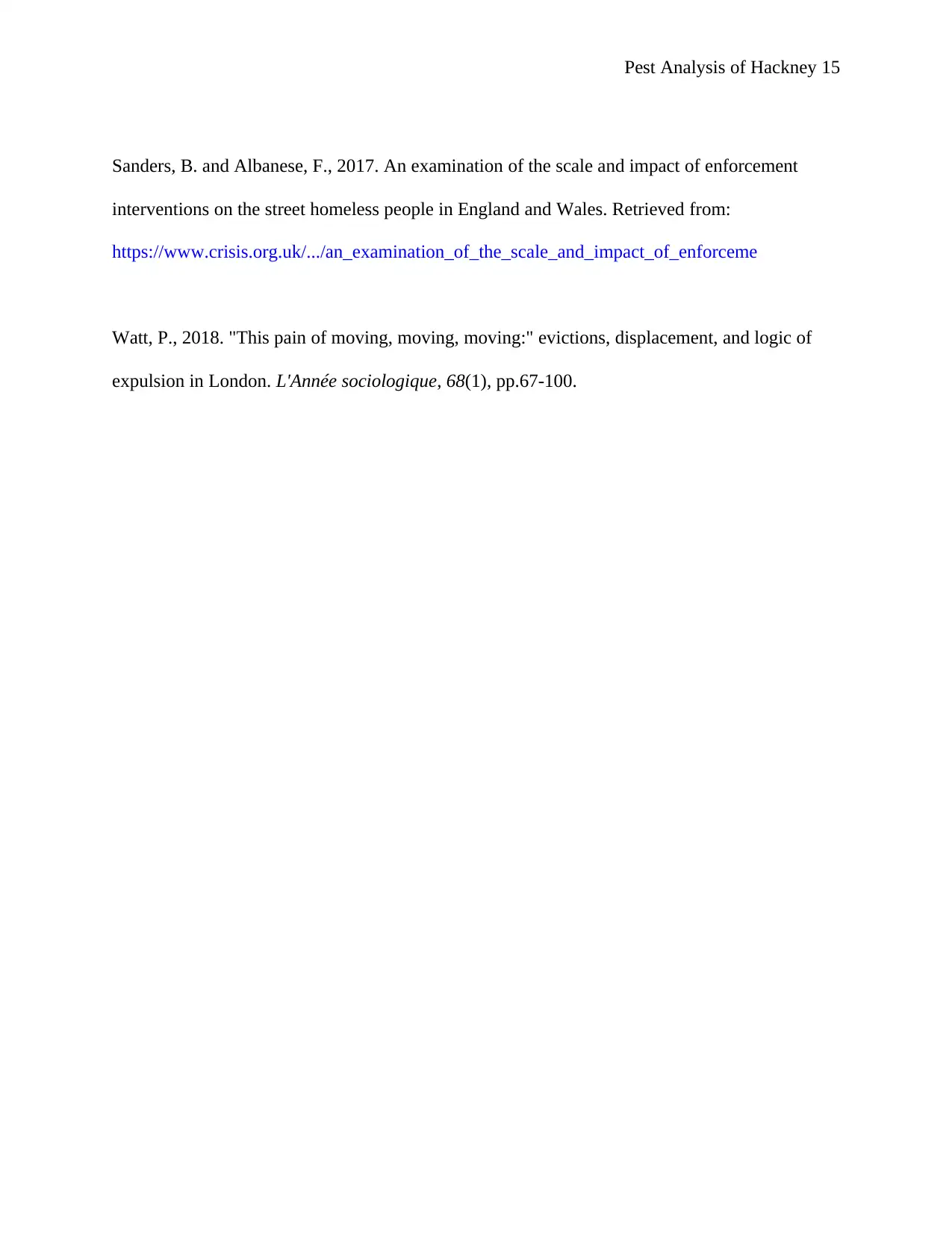Pest Analysis of Hackney for St. Mungo's: Political, Social, Economic, and Technological Factors
VerifiedAI Summary
This report performs a PEST analysis in the London borough of Hackney to ascertain its viability for the opening of a new St. Mungo's. It explores the political, social, economic, and technological factors that can influence the performance of the business. The report recommends that St. Mungo's should open its branches in Hackney due to the high number of homeless individuals in the area. The charity organisation should construct hostels to house the homeless and the rough sleepers. Additionally, St. Mungo's should take advantage of the technological advancements in Hackney to identify and resettle the homeless individuals. The charity organisation should also partner with the local churches and mosques to provide accommodation to the homeless individuals. Lastly, St. Mungo's should work closely with the local authorities to solve the overcrowding issues in Hackney.
![[object Object]](/_next/static/media/star-bottom.7253800d.svg)
![[object Object]](/_next/static/media/star-bottom.7253800d.svg)
